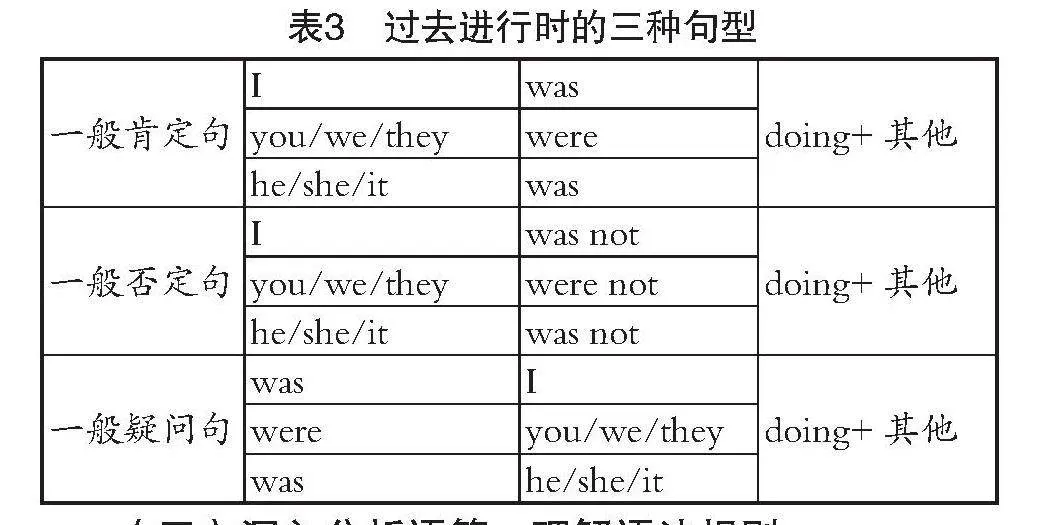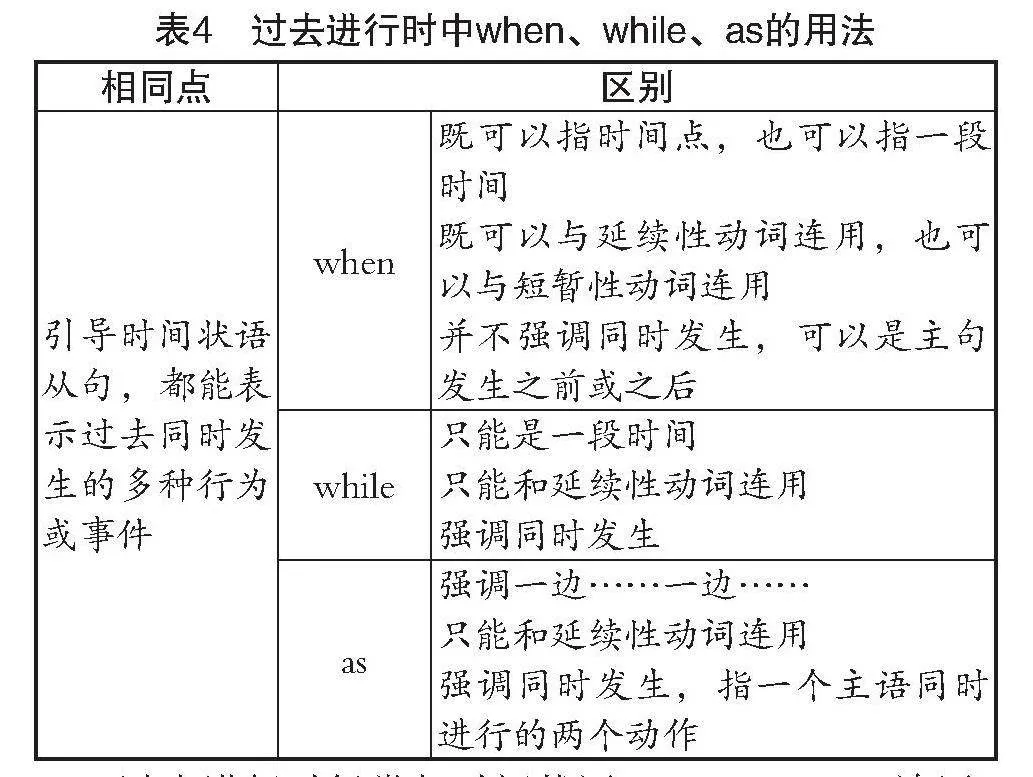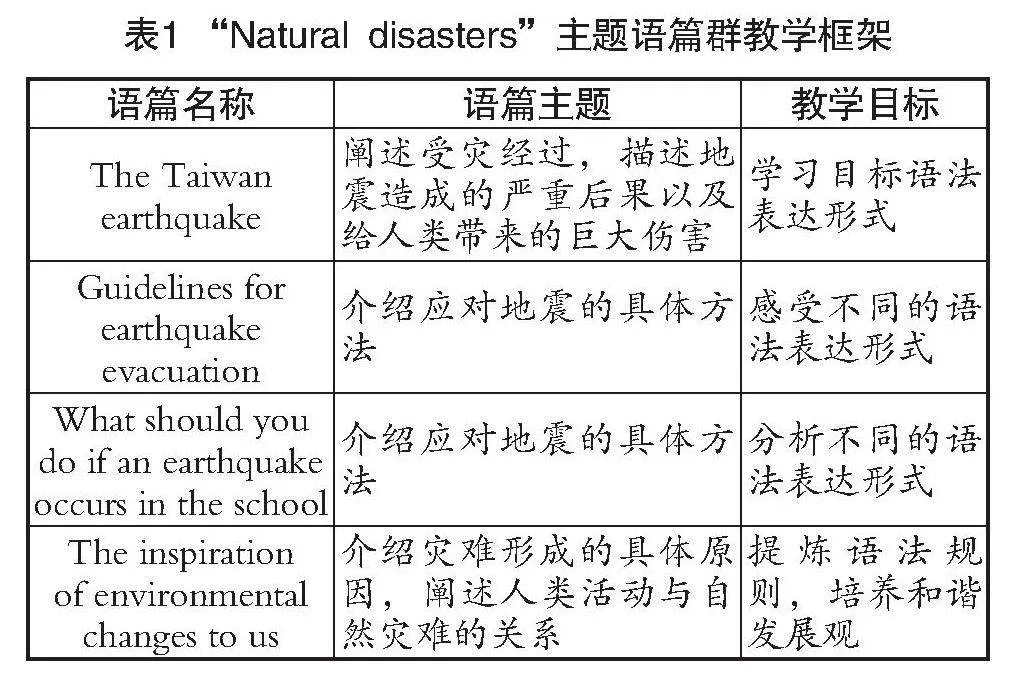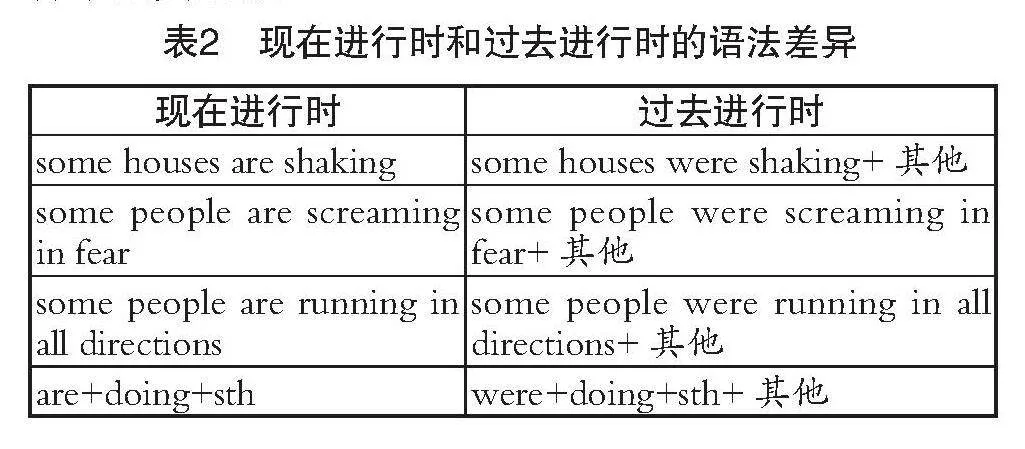基于语篇的初中英语语法教学实践探究




【摘要】语法教学一直是英语教学的重点及难点。语法内容大多比较抽象、晦涩难懂,而且富于变化,对学生而言是一个很大的挑战。语篇是语言的载体,承载了丰富的语法知识。教师在教学时,可以基于语篇开展语法教学,引导学生在丰富多样的语篇中提炼语法规则和应用规律,帮助学生把握语法的形式和意义,提升语言能力。
【关键词】语篇;初中英语;语法教学
作者简介:朱萍娟(1979—),女,江苏省江阴市要塞中学。
语法是语言的基本组成部分,是语言运行的基本规则,也是英语学习中的一个重要环节。语法的学习离不开具体的语言环境,而语篇则可以为语法学习提供大量丰富、生动的语境。因此,教师可以基于语篇开展语法教学。本文以译林版初中英语八年级上册Unit 8“Natural disasters”的教学为例,探讨基于语篇的初中英语语法教学策略。
一、精心选择语篇,梳理语法规则
基于语篇开展语法教学,首先要做的是选择合适的语篇。语篇应具有一定的文化内涵、严密的逻辑和结构、地道优美的语言等基本要素。教师在教学时,除了要重点讲解教材中的语篇,还要根据教学目标与要求适当补充一定数量的课外语篇,将教学内容进行有机整合。
例如,“Natural disasters”这一单元教学的语法主要为过去进行时的一般肯定句、一般否定句和一般疑问句,以及when、while、as的用法,目的是让学生学会准确描述过去发生的事情,了解自然灾害给人类生活带来的巨大影响,从而树立灾难意识,掌握各种应对灾难的方法,学会正确处理人与自然的关系。因此,教师在教材语篇“The Taiwan earthquake”的基础上,又增加了三篇课外阅读语篇—“Guidelines for earthquake evacuation”“What should you do if an earthquake occurs in the school”和“The inspiration of environmental changes to us”。
这些语篇有的从地震本身出发,描述地震造成的严重后果以及给人类带来的巨大伤害;有的从地震防护的角度出发,为学生提供发生地震时的逃生办法;有的从科普的角度介绍灾难形成的具体原因,阐述人类活动与自然灾难的关系。教师将这些语篇有机组合到一起,组成以“地震”为主题的语篇群,引导学生阅读不同的语篇,分析、探索、归纳和总结语法规则,了解语法的形式和意义,掌握语法结构;知悉地震产生的原因,了解地震造成的可怕后果,掌握地震逃生方法。为此,教师搭建了以下教学框架(见表1)。
教师根据教学内容和要求,为学生精选了一部分难易程度适中、指向性明确、布局合理、结构精巧的语篇,让学生可以了解不同语篇中不同的语法表达形式,探究语法的结构、性质、意义,归纳语法规则,丰富语法知识,发展语言能力。
二、创设教学情境,呈现语法知识
语法学习最好在情境中进行,这样学生才能对将要学习的语法知识产生整体感知,了解所学语法的表达形式、使用场合、基本意义及使用规则等[1]。教师可通过创设教学情境呈现语法知识,加深学生对所学语法的印象。
以“Natural disasters”这一单元的教学为例。教学时,教师先是通过视频创设生动的教学情境,让学生初步了解地震这一自然灾害,再鼓励学生用自己学过的知识将其表达出来。由于学生之前已经掌握现在进行时的用法,因此很多学生都用现在进行时来描述自己看到的景象。接着,教师因势利导,让学生熟读语篇,在语篇中寻找描述地震的句子。学生较为顺利地找出“People were running in all directions while...”等语句。教师引导学生对比找到的句子,尝试分析它们之间的共性与差异。
T:Can you tell me what kind of natural disaster this is?
S1:The earthquake.
T:What can you see in the video?
S1:I can see some houses shaking.
S2:I can see some people screaming in fear.
S3:I can see some people running in all directions.
S4:I can see some people trapped under the bricks and stones.
T:Can you find these sentences in our text?
Ss:“People were running in all directions while...”
T:Can you tell the difference between two sentences?
通过分析句子,学生在教师的引导下总结出两种时态的差异(见表2)。教师通过创设教学情境,引导学生对比分析语篇中的不同时态,使学生初步感知语法的使用场合、使用规则和表达形式等,为语法学习打下坚实基础。
三、指向深度学习,构建语法体系
(一)合理设计问题,探究语法规则
虽然语法规则有规律可循,但变化很多,随着主语、介词等的不同,句子会呈现出不同的形态,仅靠学生自己去挖掘,显然是不够的。教师在教学时,可以合理设计问题,引导学生总结语法规则中的一般规律和特殊规律。问题的设置需具有方向性和递进性,即用教学目标串联问题,并将前一个问题作为后一个问题的基础,层层推进,适当延伸[2]。
以“Natural disasters”的教学为例。教师结合语篇设计了三个有效问题。教师先通过第一个问题,让学生在语篇中寻找包含过去进行时的语句,并将其整合到一起,深入分析。接着,教师通过第二个问题,让学生对比这些语句在使用场合和表达形式上的相同和不同之处。最后,教师通过最后一个问题,引导学生系统地总结语法知识,让学生在问题的指引下逐步感知和理解语法规则,从而初步构建语法知识体系。
T:Just now we have learned about the past continuous tense.Can you identify the sentences in the text that contain the past continuous tense?
S1:“I was sleeping when the earthquake started.”
S2:“Outside,people were running in all directions while pieces of glass and bricks were falling down.”
S3:“Hours later, as I was trying to find my way out,I suddenly heard some noise above me.”
T:Great!Can you see any connection between them?
S1:They all have a structure of “was/were+doing”.
S2:They both have two actions happening simultaneously.
T:What are the differences between them?
S1:When the subject is“I”or“her/him/it”, followed by“was”.
S2:When the subject is“we/you/them/people”, followed by“were”.
T:Can you try to summarize the characteristics of the past continuous tense?
Ss:Yes.
(二)引导举一反三,总结语法规则
在学生初步了解语法规则之后,教师可以引导学生运用自己所学的知识,或是在探究过程中积累的学习方法和学习经验等,对相关内容进行发散性思考,让学生能够举一反三,进一步完善知识架构,建构完整的语法知识体系。
以“Natural disasters”的教学为例。学生通过此前的探究,已经初步总结出过去进行时中一般肯定句的句型结构。于是,教师让学生结合自己学习现在进行时、一般过去时等的学习方法和经验,探索过去进行时的一般否定句、一般疑问句的句型结构。
T:Now that we know the general affirmative sentence of the past continuous tense,can you write its general negative sentence?
S1:I was not sleeping when the earthquake started.
T:Great, who can change the subject?
S2:He was not sleeping when the earthquake started.
S3:They were not sleeping when the earthquake started.
T:What can you see?
S1:The negative sentence in the past continuous tense is to add“not”after“was/were”.
T:What about general interrogative sentences?
S1:Was she sleeping when the earthquake started?
S2:Were they sleeping when the earthquake started?
(三)深入分析语篇,理解语法规则
在语法学习中,形式的建构只是第一步,学生还需要掌握语法的性质、意义、功能、使用场合等深层次的内容,才能真正理解规则,学会运用规则。教师在教学时,可以引导学生深入分析、体悟、运用语法,使学生真正掌握语法知识。
以“Natural disasters”的教学为例。教师引导学生通过小组合作的方式,对语篇进行深入细致的分析,引导学生探索过去进行时的使用场合、功能及使用规则等,让学生真正建立对过去进行时的深度认知。
T:What have you found by carefully reading the sentence“I was sleeping when the earthquake started”?
S1:This sentence explains two things.
T:What about those two things?
S1:One is that the author was sleeping, and the other is that the earthquake has started.
T:What is the relationship between these two things?
S2:They happened simultaneously.
T:Let's take a look at the other two sentences again, is it the same?
S2:Yes.
T:What are the differences between them?
S2:They respectively use “when”“while”and“as”.
T:Now we know“when”“while”and“as”can be used as conjunctions of time.They all mean“during the time”.
T:What's the difference between them?Let's divide into groups and discuss it!
过去进行时经常与时间状语when、while、as连用,虽然都能表达在过去某个时间内同时发生的动作和行为,但是意义和用法都有不小的区别。教师指导学生分小组合作,深入分析语篇,从语篇的含义入手,让学生发现句子中主语与when、while、as引导下的状语从句之间的关系,从而使学生真正理解语法规则,学会正确使用语法规则。
四、开展实践活动,实践语法规则
实践出真知,学生只有通过实际运用,才能真正掌握语法[3]。在基于语篇开展语法教学时,教师要合理组织实践活动,帮助学生理解语法的表现形式和使用规则,锻炼学生的语言能力。
以“Natural disasters”的教学为例。教师让学生结合教材中的语篇,运用过去进行时进行仿写,记录前一天的经历。为了让学生的写作更为流畅,教师给予学生适时的指导,帮助学生更好地完成写作。
T:Can you use the past continuous yet?Let's do an exercise.Recall yesterday's experience and write it down in the past continuous tense.
S:What should we do?
T:You must use“when”“while”“as”correctly.What do you want to do?
S:I want to write these sentences first and then expand them.
T:Good idea, let me see what you've written.
S:I was sleeping when the alarm clock rang yesterday morning.
T:What happened next?
S:When my mom came in and called me, I was brushing my teeth.
T:Under what circumstances can we use the“while”sentence structure?
S:While having breakfast, I suddenly remembered going to the library.
T:At that time, were you thinking of going out quickly.
S:Yes,but just as I was opening the door, I heard the phone ringing.
T:Great, as long as it continues to extend, it's a very interesting story.
在学生对过去进行时及when、while、as引导下的状语从句的意义和用法有深刻的了解之后,教师组织学生开展写作训练,让学生在实践中内化所学知识,提升学生的语言运用能力。
结语
总之,语法在英语学习中占有非常重要的地位。教师在教学时,要善于为学生挑选符合主题的语篇,引导学生通过观察、对比、分析、综合,掌握语法规则,帮助学生打通语法形式、意义和应用之间的壁垒,切实提升学生的语言运用能力。
【参考文献】
[1]曹彩霞.基于语篇的初中英语语法教学策略与实践探究[J].英语教师,2022,22(20):106-109.
[2]王慕雨.利用文学类语篇开展初中英语语法教学的探索[J].中小学外语教学(中学篇),2023,46(1):35-41.
[3]代俊华,薛绍兰.基于语篇的初中英语语法教学探索与实践[J].中学教学参考,2022(4):22-24.

